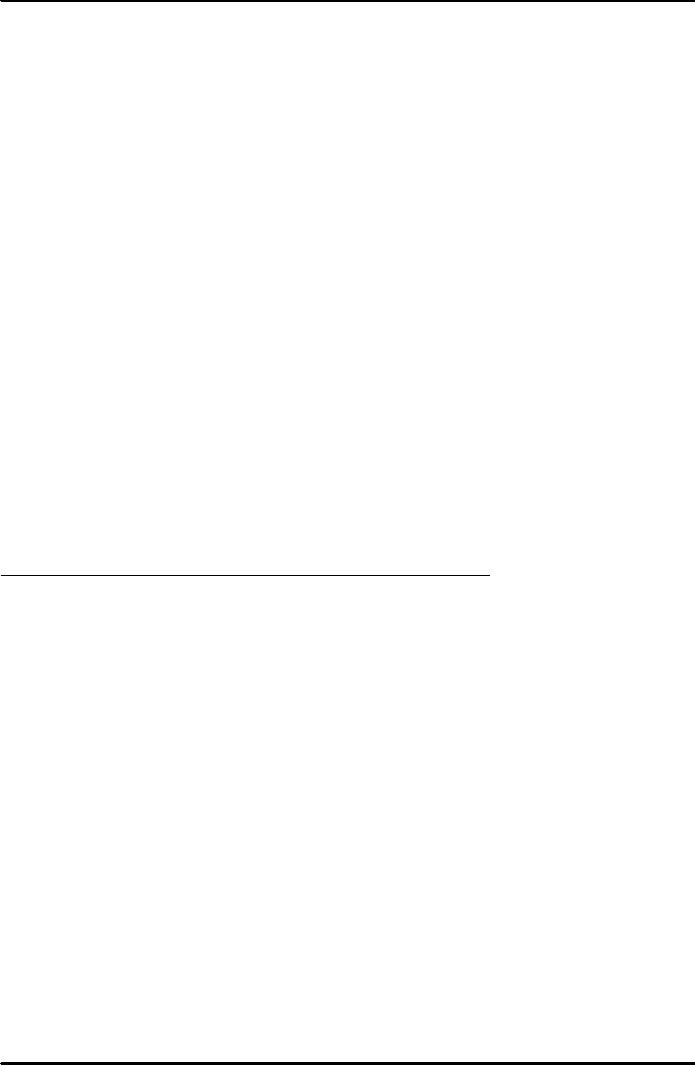 |
PROCESS OF PREPARING EFFECTIVE BUSINESS MESSAGES |
| << INDIVIDUAL CULTURAL VARIABLES:Acceptable Dress, Manners |
| Composing the Messages:THE APPEARANCE AND DESIGN OF BUSINESS MESSAGES >> |

VU
Lesson
15
PROCESS
OF PREPARING EFFECTIVE BUSINESS
MESSAGES
3.
Choose the ideas to include.
While
answering a letter, one can
underline the main points to
discuss and get the ideas
briefly on a pad. If
one
is writing unsolicited or a complex message,
one can begin by listing
ideas as they come to mind.
Then
most
important facts can be
changed into message. It is better
that the message written to
welcome a
customer
should have other incentives or
policies what the firm offers.
*
Consider your reader's
viewpoint (be in his
place)
*
Read company's document
*
Talk with your colleagues,
customer etc.
*
Ask your audience for
input
4.
Collect all the facts to back up
these ideas.
After
the main ideas, the writer /
speaker should ask himself what specific
facts, updated figures
or
quotations
he needs. The knowledge of the company's
policies, procedures, and
product details is
necessary
for
an effective communication. A brochure, table picture, or
product sample is also
useful to enclose.
Find
out
*
be sure the information is
accurate
*
be sure the information is
ethical
*
be sure the information is
pertinent
*
select appropriate channel
5.
Outline organize your
message.
The
order in which the ideas are
to be presented is as important as the
ideas themselves.
Disorganized
writing
reflects disorganized, illogical
thought process or careless
preparation.
Choose
the organizational plan after the purpose has
been finalized collecting all
necessary facts. Ask
yourself:
"How
will the reader or listener
react to these ideas?".
Beginnings
& Endings
Dear
Mr. Hassan,
You
are right to expect
high-quality merchandise from
The Automatic Door Company;
we try to give you
the
best for your money
and to stand behind our
products when they fail as a result of
defects in material
and
workmanship, as our warranty
states.
We
appreciate your sending the
door opener to us for
analysis. It appears that the opener
has got wet.
Excess
moisture over a period of time
causes this defect.
Our
service manager estimates
that cleaning and repairing
your door opener would
cost Rs. 250.
Since
your door opener is several
years old, you may want to
consider buying a new one.
We have made
many
improvements to our door openers
since yours was
manufactured, including a sealed
circuit board
that
would prevent the possibility of damage
from moisture. A new door
opener, which costs Rs.
3500.00
postpaid,
should give you even longer service
than your old one
did.
Please
let us know whether you want us to repair
or replace your opener.
Yours
sincerely,
Beginnings
& Endings
44

VU
THE
FIRST PUNJAB LIBRARY
Muslim
Town Lahore.
Dear
Friend,
The
most comprehensive selection of
Quaid-e-Azam's speeches, public writings,
and private letters
ever
published!
YOURS
FOR JUST RS.500
Quaid-e-Azam
was not only the founder of
Pakistan but also a great
orator.
Here
are all of Quaid's speeches,
from the early days in his
politics, including all his
addresses to the
students
of different institutions. It includes
Quaid's personal and
political correspondence.
Above
all, here is Quaid's absolutely
distinctive language, resonant
with dignity, wit, and the
uniquely
patriot
flavour.
Write
today for your copy of the
book. You'll be awfully
glad.
Sincerely
yours,
Beginnings
& Endings
The
way you begin your message
makes it clear whether your
reader will respond
favourably or
unfavourably
to the message. When you are
sure that your message
has something favourable or neuter
for
the
reader, you must begin your
message with the main idea
or good-news in the beginning. The
opening
must
be impressive in a way that it
captures the attention of the reader. So
always choose appropriate
openings
that suit the purpose of
your message. The following
openings are desirable in
direct-request,
good-news
and neutral messages.
Main
Idea: The
goods which you ordered on
March 5 have been sent to
you by passenger
train.
Request:
So
that your order can be
filled promptly, please send
another copy of the requisition.
Announcement:
Now
you can take an air
conditioned coach from Lahore to
Islamabad any hour.
Whenever
required, employ 5Ws and one H to give
clarity to your messages.
Buffer:
If you
have bad news, begin your
message with a buffer. A
buffer is a statement, that
helps you
bring
your reader in a positive
frame of mind, and the
message becomes readable for
the reader. But
"Buffer"
should be neutral in tone. You should also
avoid misleading the reader
into thinking that
the
message
is good.
Poor:
It is
impossible to open your account
unless you send us the
following information.
With
buffer: The
moment you send us the following
information your account
will be opened.
Poor:
We
never exchange damaged
goods.
With
buffer: We are
happy to exchange the merchandise that is
returned to us in good condition.
In
persuasive request (sales letter), begin
the message with an attention-getting
statement. An experienced
writer
uses some common technique to attract the
reader. Consider some of
attention-getting statements:
A
challenge: Don't
waste another day wondering
how you're going to become the success
you've always
wanted
to be!
The
writer should avoid using
trite and stereotyped
expressions. Make your
openings considerate,
courteous
concise,
and clear. Keep your
first paragraph short and
use simple conversational
language.
Never
open your letter with an incomplete
sentence like:
Reference
to your letter of March 6
regarding opening of a current
account.
45

VU
Make
opening specific
Poor:
Thank
you for your
order.
Specific:
Thank
you for you order
for 200 writing
pads.
Close
Paragraph
An
effective ending will motivate the reader
to act as requested. If no direct request
is required, leave the
reader
with some expression of
regard, assurance, appreciation or
willingness to help. Always
remember
that
closings should be strong, clear
and polite. They should leave a
sense of closure and
goodwill with the
receiver.
1.
Make your request clear
and complete with Five Ws
and the H.
2.
Include your phone number
and extension if you want the reader to
phone you.
3.
Enclose a form (card, order,
blank, or questionnaire) and an
addressed reply envelope (perhaps
with
postage
paid) if you want the reader to furnish
something.
4.
Give complete instructions regarding
how
and
where
if you
do not include a form and
envelope.
5.
State your office hours
and location if you want the
reader to come to you in
person. Do you have a
free
parking
lot? Where?
Close
Paragraph
1.
Make Action
Vague:
I look forward to hearing
from you regarding this
matter.
Better:
So that we can make appropriate
arrangements for your visit,
please call me at 541000,
before
Friday,
November 16, anytime between
9 A.M. and 5 P.M.
2.
End on a Positive, Courteous
Thought
Include
Any Apologies and Negatives
Before Last Paragraph. Study
these examples:
Negative:
I'm sorry we can't be more
encouraging at this time.
Positive:
We wish you success in your
search for a
position.
Be
Friendly: Offer to help the
reader further, if that is appropriate.
Words like please
or
will
you help
soften
commands.
Good:
If there is any further way
we can assist you please
call 555-4567 Monday through
Friday
between
9 A.M. and 5 P.M.
Avoid:
Thank you in advance for
distributing these questionnaires to
your employees.
Say:
I will appreciate your
distributing these questionnaires to
your employees.
Give
my regards to your lovely
family. I enjoyed meeting them during the
October conference.
3.
Keep Last Paragraph Concise and
Correct
Trim
your last paragraph to five
or fewer lines of complete
sentences. Avoid
unnecessary
repetition.
In
short letters, the writer often
gives his message and
stops without any special
formality: Make
your
opening and closing
paragraph shorter than average
because the most important
location in a letter is
the
opening. The second most
important is the closing.
46
Table of Contents:
- COMMUNICATION:Definition of Communication, Communication & Global Market
- FLOW OF COMMUNICATION:Internal Communication, External Communication
- THEORIES OF COMMUNICATION:Electronic Theory, Rhetorical Theory
- THE PROCESS OF COMMUNICATION & MISCOMMUNICATION:Message
- BARRIERS IN EFFECTIVE COMMUNICATION /COMMUNICATION FALLOFF
- NON- VERBAL COMMUNICATION:Analysing Nonverbal Communication
- NON- VERBAL COMMUNICATION:Environmental Factors
- TRAITS OF GOOD COMMUNICATORS:Careful Creation of the Message
- PRINCIPLES OF BUSINESS COMMUNICATION:Clarity
- CORRECTNESS:Conciseness, Conciseness Checklist, Correct words
- CONSIDERATION:Completeness
- INTERCULTURAL COMMUNICATION
- INTERCULTURAL COMMUNICATION:Education, Law and Regulations, Economics
- INDIVIDUAL CULTURAL VARIABLES:Acceptable Dress, Manners
- PROCESS OF PREPARING EFFECTIVE BUSINESS MESSAGES
- Composing the Messages:THE APPEARANCE AND DESIGN OF BUSINESS MESSAGES
- THE APPEARANCE AND DESIGN OF BUSINESS MESSAGES:Punctuation Styles
- COMMUNICATING THROUGH TECHNOLOGY:Email Etiquette, Electronic Media
- BASIC ORGANIZATIONAL PLANS:Writing Goodwill Letters
- LETTER WRITING:Direct Requests, Inquiries and General Requests
- LETTER WRITING:Replies to Inquiries, Model Letters
- LETTER WRITING:Placing Orders, Give the Information in a Clear Format
- LETTER WRITING:Claim and Adjustment Requests, Warm, Courteous Close
- LETTER WRITING:When The Buyer Is At Fault, Writing Credit Letters
- LETTER WRITING:Collection Letters, Collection Letter Series
- LETTER WRITING:Sales Letters, Know your Buyer, Prepare a List of Buyers
- MEMORANDUM & CIRCULAR:Purpose of Memo, Tone of Memorandums
- MINUTES OF THE MEETING:Committee Members’ Roles, Producing the Minutes
- BUSINESS REPORTS:A Model Report, Definition, Purpose of report
- BUSINESS REPORTS:Main Features of the Report, INTRODUCTION
- BUSINESS REPORTS:Prefatory Parts, Place of Title Page Items
- MARKET REPORTS:Classification of Markets, Wholesale Market
- JOB SEARCH AND EMPLOYMENT:Planning Your Career
- RESUME WRITING:The Chronological Resume, The Combination Resume
- RESUME & APPLICATION LETTER:Personal Details, Two Types of Job Letters
- JOB INQUIRY LETTER AND INTERVIEW:Understanding the Interview Process
- PROCESS OF PREPARING THE INTERVIEW:Planning for a Successful Interview
- ORAL PRESENTATION:Planning Oral Presentation, To Motivate
- ORAL PRESENTATION:Overcoming anxiety, Body Language
- LANGUAGE PRACTICE AND NEGOTIATION SKILLS:Psychological barriers
- NEGOTIATION AND LISTENING:Gather information that helps you
- THESIS WRITING AND PRESENTATION:Write down your ideas
- THESIS WRITING AND PRESENTATION:Sections of a Thesis (Format)
- RESEARCH METHODOLOGY:Studies Primarily Qualitative in Nature
- RESEARCH METHODOLOGY:Basic Rules, Basic Form, Basic Format for Books